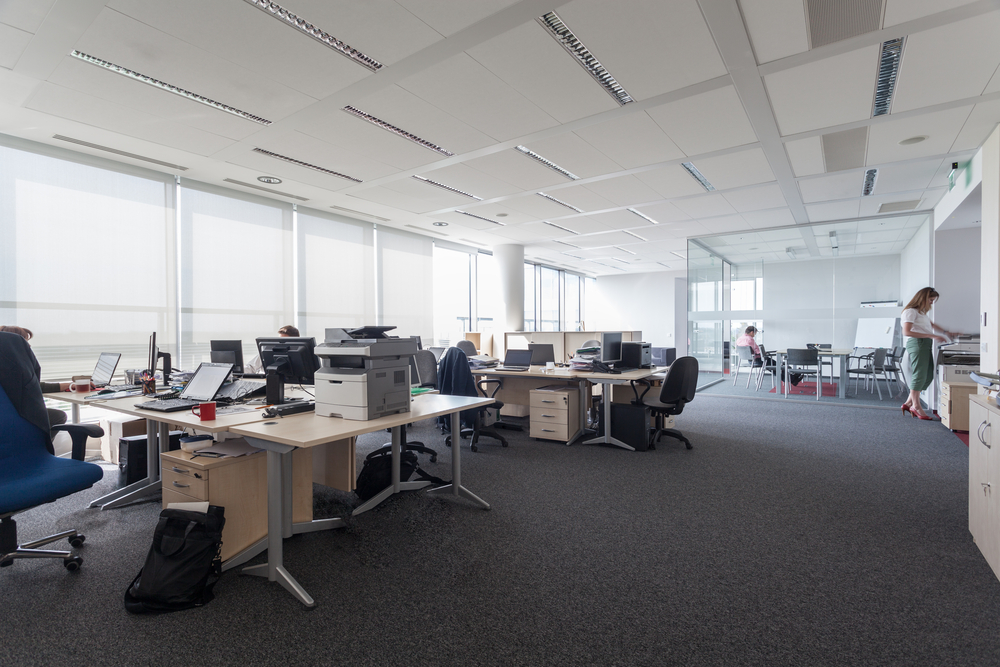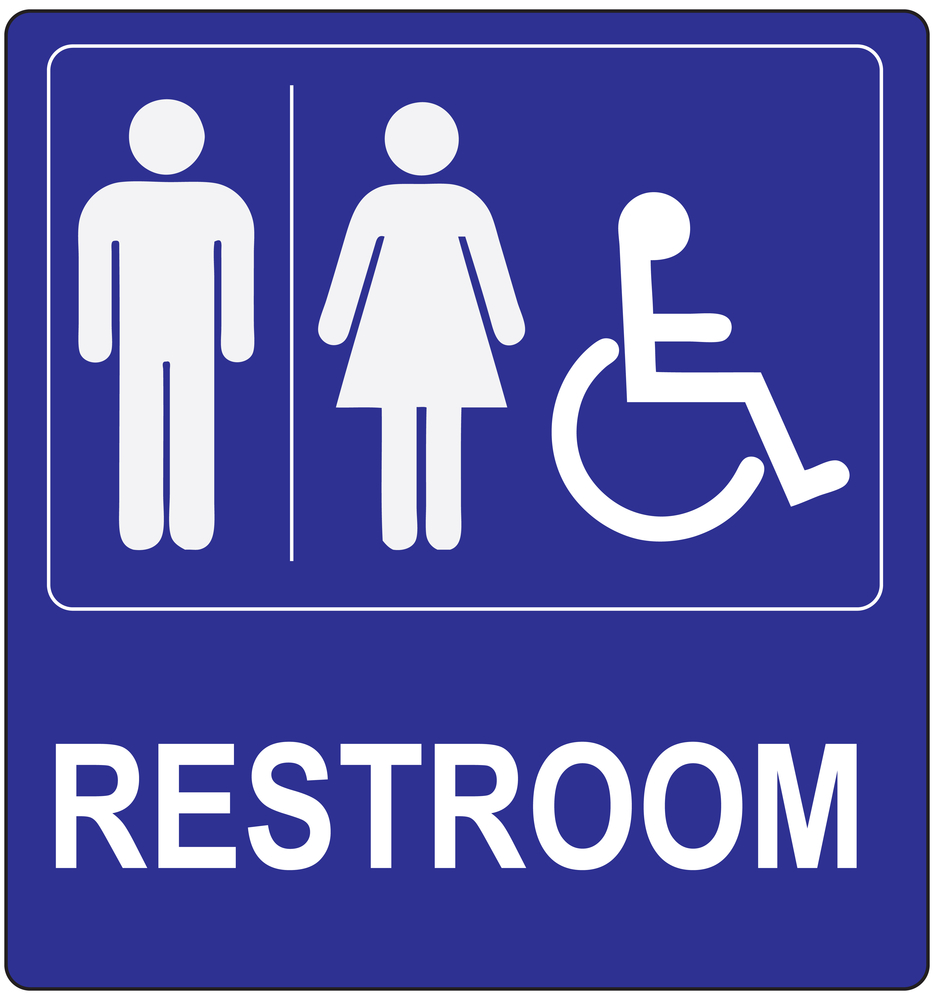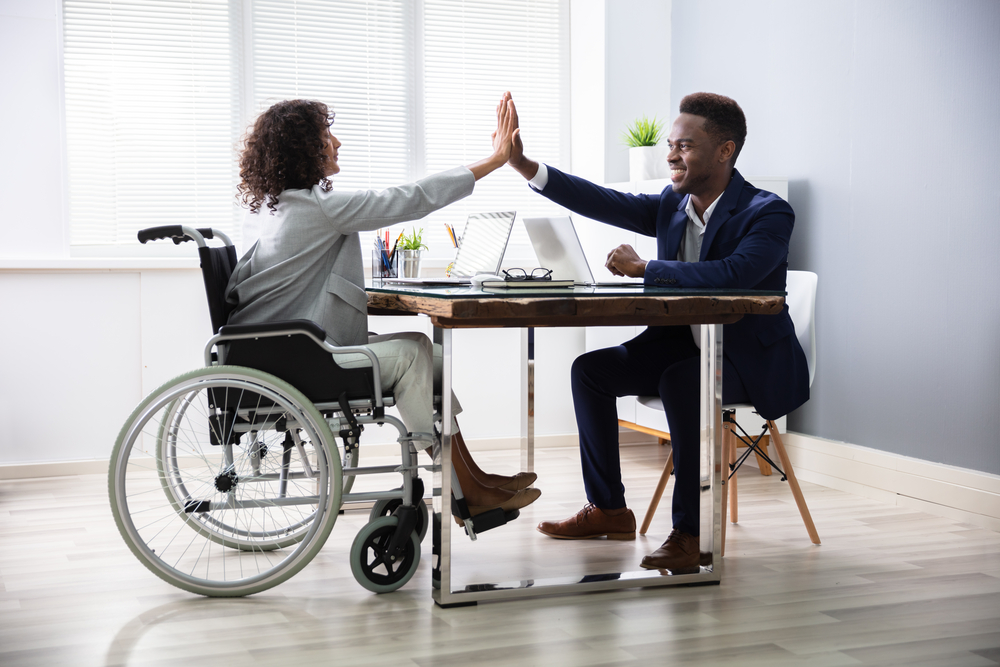Businesses need to strive for more than accessibility. They need to work at being more welcoming to people with disabilities.
July is Disability Pride Month. The latest annual Disability Equality Index Report on disability inclusion at major corporations jus came out. And on July 26, 2022, people with disabilities across the U.S. will celebrate the 32nd anniversary of the Americans with Disabilities Act.
While the ADA is still a source of hope and pride — a remarkable example of what disabled people and their allies can achieve in the public policy sphere — each anniversary tends to raise similarly mixed feelings of pride, frustration, and determination in the disability community. It also raises some of the same questions that prompted the ADA in the first place: “Why are so many places still inaccessible to us?” and, “Why do so many supposedly accessible places still feel so daunting to us, so exhausting and unwelcoming?”
These questions about everyday retail accessibility can at times seem old, even trivial. They often sound like merely the lifestyle concerns of otherwise privileged and comfortable wheelchair users and elderly retirees with mobility issues — least compared with some of the more dire freedom and confinement, life and death issues millions of disabled people still face.
Still, ordinary business accessibility is as relevant today as it was in the early ‘90s, when the ADA was new and seemed to promise making accessibility in every neighborhood’s stores and offices something like an ironclad legal requirement. It’s still relevant because while the ADA and its accessibility guidelines have helped make most areas of the U.S. far more accessible than they were in previous generations, 32 years later, accessibility still too often feels like an afterthought. Accessibility is still treated like some kind of premium feature rather than a civic responsibility for businesses, or a civil right for customers. It may be even more relevant now than before, as the population overall continues to skew older, and as the population of disabled people is likely to rise in the wake, (or continuation), of Covid-19 and its variants. Also, comparatively easier and more accessible options like online shopping and delivery services make it easier for disabled people to simply reject inaccessible businesses, now without material loss except in socialization and choice. Accessibility of brick and mortar businesses may soon become a genuine and significant competitive necessity, as it has always promised to be.
But if businesses want to benefit from doing the right thing, they must look beyond mere compliance. They need to focus on more than physical access, more even than equal service, but also on fostering feelings and experiences disabled people in particular crave — capability, freedom, and appreciation.
Here are five ways any business can start to create or improve on its accessibility, and offer a more welcoming environment for disabled customers.
1. Easy parking and entrance

Disabled people who drive choose businesses with the most accessible and available parking spaces. Sometimes it really is that simple — a deal breaker when parking is a pain, a deal-maker when it’s a breeze.
Designated handicapped parking spaces need to be laid out and marked in a certain way, something still often overlooked or misunderstood. The spaces themselves need to be as close as possible to the main customer entrance. They have to be wide enough, generally 8 feet. And they need to have marked “access aisles” adjacent so disabled drivers have room to get out of their cars and away, without banging into a neighboring car. These are some of the simplest accessibility standards to follow. Yet they are still often only partially or sloppily implemented.
Enforcement doesn’t have to be a big issue, but businesses need to take a positive interest in it. One of the weaknesses of the whole “accessible parking” laws is that it’s hard to find anyone willing to take responsibility for enforcing them. Aside from occasional high-profile efforts by police or volunteers, enforcement of accessible parking is often a low priority. And informal, citizen enforcement, though usually well-intentioned, often ends up being mishandled and generating more hostility towards disabled people than accessibility. Businesses can help by monitoring the spaces their customers use, ditching neutrality on the issue, and weighing in on the side of respecting and properly using accessible parking.
2. Wide pathways, less clutter

Disabled people, especially those with mobility impairments, need space to move. For a start, they need wide, smooth sidewalks to get easily into and out of your business. This is important for people who use wheelchairs of course, but also people using crutches or canes, with a guide dog or human assistant, or just with somewhat more delicate balance and limited stamina for physically taxiing walks.
Accessibility of this kind can’t stop at the door either. Inside, disabled customers want to find wide, clear pathways, product aisles, and gathering areas. Disabled people need enough clear space to walk, wheel, stop, and turn around without crashing into product displays or other customers.
This is why layout and even decor matters. Keep in mind that some aspects of that charming, cluttered, “general store” look and feel can make a business distinctly uncomfortable as well as inaccessible for disabled customers. It’s one of the reasons why “big box” stores often have an edge over some smaller businesses, at least on physical accessibility. And don’t forget that lighting and sound dynamics can either make a business space more or less comfortable and usable for people with visual or hearing impairments — in ways that you might not think of at first.
3. Reachable, usable, well-lit interiors
High shelves, service counters, and tables are bad for wheelchair users, and for Little People and others who have more trouble than most reaching high up to see, grab, and operate things in a business.
Try to be as creative as you can to keep the things you want customers to see, use, and buy on a lower level. Check for specific accessibility standards, but as a general rule, think in terms of keeping things to be reached and handled below 4 feet high. This applies to product shelves of course. But high-top tables and stools in restaurants and bars are also especially loathed in the disability community. They are hard for shorter people to deal with, and almost entirely exclude wheelchair users.
As already noted, dark “moody” environments, like in some restaurants and bars, create problems for visually impaired people. Likewise noisy environments that are exciting for some customers, such as in nightclubs, can be as bad for deaf and hard of hearing customers as un-ramped steps are for wheelchair users. If these aesthetic factors can’t be completely eliminated, businesses should at least offer some good, targeted accommodations, like additional spot lighting or designated quieter areas.
Above all, try to make all of your business both accessible and enjoyable for people with all kinds of disabilities, and as seamlessly and naturally as possible.
4. Wheelchair accessible restrooms

For restaurants especially, good, accessible restrooms are key. Wheelchair users really do develop internal maps in the heads of where in their communities they can go to the toilet, and where they can’t. And visitors in wheelchairs are almost always anxious about it in unfamiliar towns and cities.
Anyplace you want your customers to stay more than, say, half an hour, they need to be able to go to the restroom. People with disabilities will not patronize those that don’t have them, and they will remember. Their families and friends will remember too. It is an absolute deal-breaker. And especially in neighborhoods with overall poor accessibility, a genuinely accessible and comfortable restroom is an asset for any business.
Restroom accessibility is also one of the more complicated and exacting areas in terms of proper design. Take the time to look up and fully understand all the requirements. And get both professional help and actual disabled people’s input before you try to approach it as a DIY project.
5. Aware, responsive staff
It shouldn’t need to be said, but it’s worth repeating — physical accessibility is only part of making a business welcoming to disabled customers. It’s harder to measure or fix than door widths or toilet placement, but staff attitudes and practices are probably more than half the game. Helpful and considerate staff can even help compensate for at least some aspects of less than ideal physical accessibility.
Staff issues and customer relations skills deserve whole articles on their own. And it can take awhile to change workplace cultures. But businesses should at least begin to focus honest attention on avoiding the most common and bothersome habits of ableism disabled customers tend to encounter: neglect, condescension, and rigidity.
When a visibly disabled commuter comes into a business, and staff don’t know right away how to help or what kind of help might be called for, their first reaction is sometimes to ignore them. This is a major turn off for disabled customers, for obvious reasons. On the other hand, being too sweet, attentive, and solicitous — too overtly condescending — can also make disabled customers feel uncomfortable and insulted. Disabled people notice both extremes, even when staff are entirely unconscious of them. Try to strike a balance between letting disabled customers set the agenda and explore independently, and being receptive to their requests for help when they come.
The other major risk for driving away disabled customers is when staff is too rigid, too reluctant to break routines. As already noted, providing equal service often means providing different or extra help. Nothing drives away a disabled customer quite like hearing fairly reasonable requests for help answered with, “I can’t do that,” or “I’m not allowed.” Staff should feel empowered to step at least a little bit out of their usual roles and beyond usual procedure in order to serve a disabled customer.
Even if you think your business is accessible already, it can’t hurt to take a day to think methodically about any unnecessary barriers or unwelcoming practices you might be able to fix.
And unless you have a disability yourself, try to get some help from people with disabilities. If possible, more than one kind of disability. And offer to pay them for their time, even if it’s a close friend, family member, or an already loyal disabled customer. Making a business accessible and welcoming to people with disabilities is an important undertaking. It’s worth doing well, both thoughtfully and professionally.
Source: Forbes

